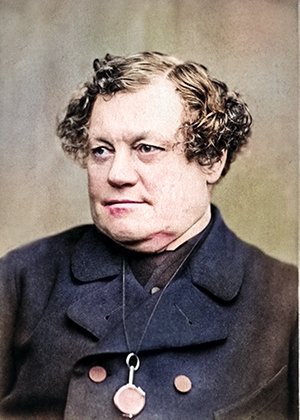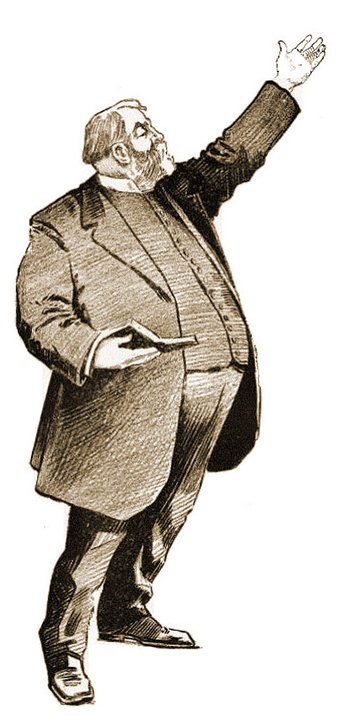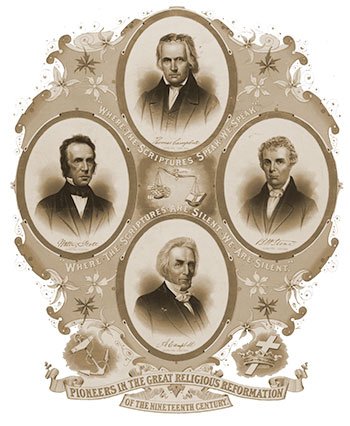1859 Ballymena Revival

Brownlow North
A Spark in Ulster’s Christian Awakening
The year 1859 witnessed an extraordinary surge of religious fervour that swept across Ulster, Ireland, leaving an indelible mark on the region’s spiritual landscape. This period, known as the Ulster Revival of 1859, saw countless individuals embrace Christianity, transforming lives and communities. While the revival spread throughout Ulster, Ballymena emerged as a significant centre of this spiritual awakening. This article looks into the history of the Ballymena Revival, exploring its antecedents, key figures, supernatural occurrences, and lasting impact.
A Town Ripe for Revival: Ballymena in the Mid-19th Century
To understand the impact of the revival, it’s crucial to examine the social and religious context of Ballymena in the mid-19th century. Like much of Ireland, Ballymena had endured hardship in the preceding years, particularly during the Great Famine of the early 1850s 1. This period of suffering and emigration created a sense of despair and uncertainty, leaving many searching for solace and meaning.
Amidst this backdrop, a spirit of religious lukewarmness had settled over many churches in Ulster 1. However, a remnant of devout believers remained, yearning for a spiritual awakening. This desire was further fuelled by news of religious revivals sweeping across America in 1857 and 1858 2. The stage was set for a profound spiritual transformation.
Seeds of Revival: The Role of Mrs. Colville and Early Prayer Meetings
The revival in Ballymena can be traced back to the efforts of an Englishwoman named Mrs. Colville, who arrived in the town in 1856 with a mission to spread the Gospel 4. Her fervent evangelism, particularly her emphasis on personal conversion and the new birth, deeply impacted a young man named James McQuilkin 4. McQuilkin, previously known for raising fighting cocks, experienced a profound conversion and became a key figure in the revival 4.
Inspired by Mrs. Colville and encouraged by Rev. John Moore, the minister of Connor Presbyterian Church, McQuilkin and three friends – Jeremiah Meneely, John Wallace, and Robert Carlisle – began meeting for prayer in an old schoolhouse in Kells 4. These prayer meetings, characterized by earnest intercession and a hunger for God’s presence, became the cradle of the revival 7.
The Flame Ignites: Ahoghill and the Spread to Ballymena
The revival’s momentum grew in March 1859, during a thanksgiving service at First Presbyterian Church in Ahoghill 4. The service, led by Rev. David Adams, drew an overflowing crowd of around 3,000 people, far exceeding the church’s capacity 4. Many were overcome with conviction of sin and openly sought forgiveness, marking a significant outpouring of the Holy Spirit 4.
From Ahoghill, the revival quickly spread to Ballymena, where it took on a dramatic and sudden character 8. The week commencing May 17th proved to be a pivotal point in the Ballymena revival 9. The town was gripped by a spiritual fervour that permeated homes, workplaces, and public spaces. One minister, returning after a short absence, found the town transformed, with many families staying up for days, engrossed in prayer and singing 8.
Leaders of the Awakening: Laymen and Revival Preachers
A striking feature of the 1859 Revival was its emphasis on lay leadership. While the revival began with laymen like McQuilkin, it was further fuelled by the involvement of other ordinary individuals and recent converts who took on prominent roles 6. This marked a departure from the traditional dominance of ordained clergy in leading religious movements.
Prominent revival preachers like Henry Grattan Guinness and Brownlow North also played a significant role, traveling throughout Ulster, drawing large crowds, and intensifying the spiritual awakening 6. North, on one occasion, preached to a massive gathering of 12,000 people in Newtonlimavady 6.
The revival also highlighted the leadership of local ministers like Rev. John Hamilton Moore, whose simple yet powerful preaching emphasized both the terrors of sin and the mercy of God 8. Moore’s support for the prayer meetings and his focus on the souls of men played a crucial role in nurturing the revival’s growth 8.
Manifestations of the Spirit: Supernatural Happenings and Spiritual Experiences
The Ballymena Revival was marked by numerous accounts of supernatural happenings and intense spiritual experiences. Many people reported a profound conviction of sin, leading to emotional outbursts and fervent cries for mercy 10. Some individuals experienced physical prostrations, collapsing under the weight of their spiritual awareness 11. These physical manifestations, while controversial to some, were seen by many as evidence of the Holy Spirit’s powerful work 1.
The Ballymena Revival was marked by numerous accounts of supernatural happenings and intense spiritual experiences. Many people reported a profound conviction of sin, leading to emotional outbursts and fervent cries for mercy. Some individuals experienced physical prostrations, collapsing under the weight of their spiritual awareness. These physical manifestations, while controversial to some, were seen by many as evidence of the Holy Spirit’s powerful work.
Beyond these outward manifestations, countless individuals underwent profound emotional and spiritual transformations. People described a sense of God’s overwhelming presence, deep conviction leading to repentance, and a newfound joy and peace in their faith 9. The revival fostered a spirit of unity among Christians, transcending denominational barriers and creating a sense of shared purpose 12.
In Coleraine, a town near Ballymena, the revival reached a peak on June 7th, 1859, with reports of a “supernatural phenomenon” that brought the town to a standstill 13. The intensity of the spiritual atmosphere was palpable, with widespread conversions and a sense of God’s overwhelming presence 13.
A Lasting Legacy: The Impact on Ballymena and Beyond
The Ballymena Revival left an enduring legacy on the religious landscape of Ballymena and Ulster as a whole. The revival led to a significant increase in church attendance, the establishment of new churches and Gospel halls, and a renewed emphasis on prayer and evangelism 2. As a testament to the revival’s impact, three public houses in Ballymena were closed 2. The impact extended beyond the immediate region, with reports of the revival spreading to other parts of the United Kingdom 6.
The revival also contributed to social reform, with a decline in alcohol consumption and other forms of immorality 2. Pubs and distilleries closed as people embraced temperance 9, and there was a notable decline in gambling, intemperance, prostitution, and Sabbath desecration 14. Families were strengthened as biblical principles were re-emphasized 9.
The revival also contributed to social reform, with a decline in alcohol consumption and other forms of immorality. Pubs and distilleries closed as people embraced temperance, and there was a notable decline in gambling, intemperance, prostitution, and Sabbath desecration. Families were strengthened as biblical principles were re-emphasized.
In the decades that followed, the 1859 Revival continued to shape the religious identity of Ulster Protestants, fostering a strong evangelical tradition and contributing to the growth of conservative Protestantism in Northern Ireland 1. However, the revival also had unintended consequences. It contributed to the polarized nature of Ulster society by strengthening the divide between Protestants and Catholics 14. Furthermore, it led to the obscuring of the public role of conservative Evangelicalism within the Presbyterian Church 14.
Scholarly Perspectives on the 1859 Ballymena Revival
The Ulster Revival of 1859 has been the subject of scholarly analysis, with differing interpretations of its significance and impact. William Gibson, Moderator of the Presbyterian Church of Ireland in 1859, published “Year of Grace” to highlight the revival’s scriptural character and positive effects 14. In contrast, Isaac Nelson, another Presbyterian minister, offered a critical perspective in his book “The Year of Delusion,” dismissing the revival as a manifestation of hysteria 14.
These contrasting viewpoints illustrate the complexity of interpreting religious revivals and their impact on society. Modern scholarship continues to explore the causes, controversies, and consequences of the 1859 revival, examining its role in shaping the religious and social landscape of Ulster 15.
Conclusion: A Testament to the Power of Revival
The Ballymena Revival of 1859 stands as a testament to the transformative power of religious revival. It was a period of intense spiritual awakening, marked by fervent prayer, passionate preaching, and profound personal experiences. The revival’s impact was not limited to individual conversions; it brought about significant social changes, fostered a spirit of unity among Christians, and left a lasting legacy on the religious and social fabric of Ulster.
The revival’s emphasis on lay leadership empowered ordinary individuals to play a crucial role in spreading the Gospel and transforming their communities. While the physical manifestations that accompanied the revival were controversial, they underscore the intensity of the spiritual atmosphere and the profound impact it had on those involved.
The Ballymena Revival also highlights the complex interplay between religious fervour and social change. While the revival contributed to positive social reforms, it also exacerbated existing divisions within Ulster society. The events of 1859 serve as a reminder of the enduring power of faith, the potential for spiritual renewal in times of hardship and uncertainty, and the complex ways in which religious revivals shape individuals, communities, and societies.
Works cited
- The Year of Grace, the 1859 Revival in Ulster – Olde Paths, accessed on December 30, 2024, https://oldepaths.com/wp-content/uploads/2020/10/1859.pdf
- 1859 Revival – Connor Presbyterian Church, accessed on December 30, 2024, https://connorpresbyterianchurch.org/1859-revival/
- The Ulster Awakening of 1859 – Banner of Truth, accessed on December 30, 2024, https://banneroftruth.org/us/resources/articles/2009/the-ulster-awakening-of-1859/
- The Beginning of the 1859 Revival in Ulster – Banner of Truth, accessed on December 30, 2024, https://banneroftruth.org/us/resources/articles/2009/the-beginning-of-the-1859-revival-in-ulster/
- What Started the Irish Revival of 1859? – Group Bible Study, accessed on December 30, 2024, https://www.groupbiblestudy.com/post/what-started-the-irish-revival-of-1859-1
- 1859 Ulster revival – Wikipedia, accessed on December 30, 2024, https://en.wikipedia.org/wiki/1859_Ulster_revival
- Revival in N Ireland 1859 – UK Wells, accessed on December 30, 2024, https://ukwells.org/revivalists/revival-in-n-ireland-1859
- The 1859 Ulster (N. Ireland) Revival | Made Like Christ, accessed on December 30, 2024, http://madelikechrist.com/wp-content/uploads/2016/01/ulster-revival-doc.pdf
- The Ulster Revival, 1859 – Landmark Events, accessed on December 30, 2024, https://landmarkevents.org/the-ulster-revival-1859/
- “A Goodly Heritage” (36): The Ulster Revival of 1859 (Part 1) | Believer’s Magazine, accessed on December 30, 2024, http://www.believersmagazine.com/bm.php?i=20160103
- Revival in Wales 1859 – UK Wells, accessed on December 30, 2024, https://ukwells.org/revivalists/revival-in-wales-1859
- The Ulster Revival 1859, accessed on December 30, 2024, https://revival-library.org/histories/1859-the-ulster-revival/
- The Week Coleraine Stood Still – Gentle Reformation, accessed on December 30, 2024,
https://gentlereformation.com/2021/10/16/the-week-coleraine-stood-still/
- The Ulster Revival of 1859: Causes, Controversies and Consequences | The Journal of Ecclesiastical History | Cambridge Core, accessed on December 30, 2024, https://www.cambridge.org/core/journals/journal-of-ecclesiastical-history/article/ulster-revival-of-1859-causes-controversies-and-consequences/0EFD1330A23CB823A2614CEA9CCEB16F
- The 1859 revival and its enemies: opposition to religious revivalism within Ulster Presbyterianism | Irish Historical Studies – Cambridge University Press & Assessment, accessed on December 30, 2024, https://www.cambridge.org/core/journals/irish-historical-studies/article/1859-revival-and-its-enemies-opposition-to-religious-revivalism-within-ulster-presbyterianism/CE32152A3071C1241531D6F6994ACA0D



